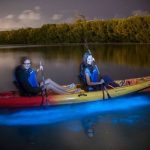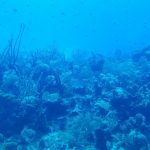Escape to Grand Cayman: Journal entries from a constant wanderer


Follow James City County resident Ben Swenson as he leaves the snow in Hampton Roads behind to explore a world of Caribbean wonder outside his resort, beyond the tourist paths and past the pristine beaches.
The Caribbean islands beckon many Virginians this time of year because they offer warm sand and sunshine, which is the perfect pick-me-up after several inches of snow fell on Hampton Roads this past month.
But if the idea of lounging beachside for hours at a time isn’t compelling enough to book a flight, consider that most Caribbean destinations, while they make tropical dreams come true, also offer to antsy trekkers a world of wonder outside the resort, beyond the well-trodden tourist paths.
My wife and I recently traveled to Grand Cayman, the largest of three major islands comprising the Cayman Islands, a British overseas territory. Grand Cayman is classic Caribbean: pristine beaches and clear, blue seawater ring the island. The stretch where most visitors enjoy these attributes is along the island’s western edge, Seven Mile Beach.
Grand Cayman is known for world-class snorkeling and scuba diving. Numerous dive shops offer lessons, equipment rental and, best of all, advice. We followed a dive shop attendant’s suggestion and snorkeled at Cemetery Beach and had the run of an expansive and intricate coral reef to ourselves.
Public transportation and tour operators offer easy access to the island’s busy tourist attractions, such as the Cayman Turtle Centre, a sea life conservation facility, Stingray City, a sandbar where swimmers can touch wild stingrays that congregate daily, and Hell, an odd collection of limestone formations.
Yet we found a few spots off the beaten path just as rewarding as the island’s better-known places. In fact, one of Grand Cayman’s most illuminating residents also happens to be one of its tiniest. On a moonless night, we followed a guide from the tour company Cayman Kayaks to see billions of these creatures shine.
The single-celled Pyrodinium bahamense emits light when disturbed, a phenomenon called bioluminescence. But they rarely appear in sufficient concentrations for humans to see their light. A sheltered cove on the north shore of Grand Cayman is one exception.
The warm water, shallowness, nutrients and restricted water flow are a perfect recipe to let these organisms thrive, according to Cayman Kayaks owner Tom Watling. Only six bays glow year-round in the Caribbean, said Watling, and in Cayman’s crystal waters, “the glow is spectacular.”
Indeed, the mild disturbances we were able to make with our hands and paddles in the water convinced these creatures to turn on — a muted, fleeting bloom of light that was as captivating as it was unexpected.
Yet the organisms that inhabit the surface of Grand Cayman’s water are merely a teaser for the living world beneath.
The Cayman Islands are the exposed peaks of an underwater mountain range called the Cayman Ridge. Just offshore are steep walls that descend thousands of feet to the floor of the Caribbean Sea. Coral reefs occupy the first couple hundred feet of this descent.
Because my wife and I are not yet ready to take the plunge into scuba diving, we decided to explore these the next best way — by submarine.
Aboard the submarine Atlantis, captain and crew ferried about two dozen passengers as deep as 115 feet beneath the surface, allowing for a candid view through portholes of the living world a few feet away.
The coral reefs that inhabit the portion seafloor that light penetrates are strikingly vast and contoured, teeming with schools of tropical fish, conchs, eels, sea turtles and stingrays. The thriving biome outside the porthole offered a humbling sense of humans’ relative place in a larger, living world.
“These reefs are a national treasure,” the captain told the passengers. “The fine for damaging a coral reef is $500,000.” (This is in Cayman Islands dollars, which is about $600,000 United States dollars.)
It’s easy to see why Caymanians are so fiercely protective of this natural resource. The nation welcomes some two million visitors a year, many of whom are drawn specifically to the coral reefs. They’re a sight to behold, an exceptional feature that few other easily-accessible destinations are able to offer.
But not all Grand Cayman’s natural wonders are found in its tropical waters. The island’s vast, undeveloped interior, matted with dense and at many points impenetrable vegetation, is laced by a network of caves carved out of limestone by water that flows beneath the surface.
A Caribbean island might seem like an incongruous location for a cave, but the Cayman Islands are, after all, partially-submerged mountains.
A couple remarkable features set Crystal Caves apart from the grottoes that casual tourists might visit in the Appalachian Mountains. For one, the caves are warm inside, and you can meander through them wearing just sandals, shorts and a T-shirt.
Another aspect is that they’ve encountered little human contact until recently. They were opened for tours only within the last decade, the rough roads leading to them cleared by an entrepreneur who spent two decades buying parcels of the island’s wilderness interior.
While more travelers to Grand Cayman are becoming aware of the caves, the formations inside appear relatively untouched compared to commercial caves stateside, some of which contain hundred-year-old graffiti.
Islanders are proud of this new attraction as Crystal Caves garnered a Governor’s Conservation Award from the National Trust for the Cayman Islands in November 2016.
Caymanians are well aware that many people come to the island to be pampered beachside, and they’re happy to oblige those desires. But the islanders are quick to point out that plenty awaits beyond the chaise lounge on the beach.
Ben Swenson is an educator and writer who lives in James City County. His blog Abandoned Country chronicles sites of historic value that have been reclaimed by nature. Swenson can be reached at [email protected]
Escape to Grand Cayman: Journal entries from a constant wanderer added by Ben Swenson on January 25, 2017
All Images Photo courtesy Ben Swenson
Coral reef as seen through a porthole of Atlantis.
The phenomenon of bioluminescence in the waters of Grand Cayman.
Formations inside Crystal Caves.
Seven Mile Beach at Grand Cayman.
For more: https://wydaily.com/2017/01/25/escape-to-grand-cayman-journal-entries-from-a-constant-wanderer/








